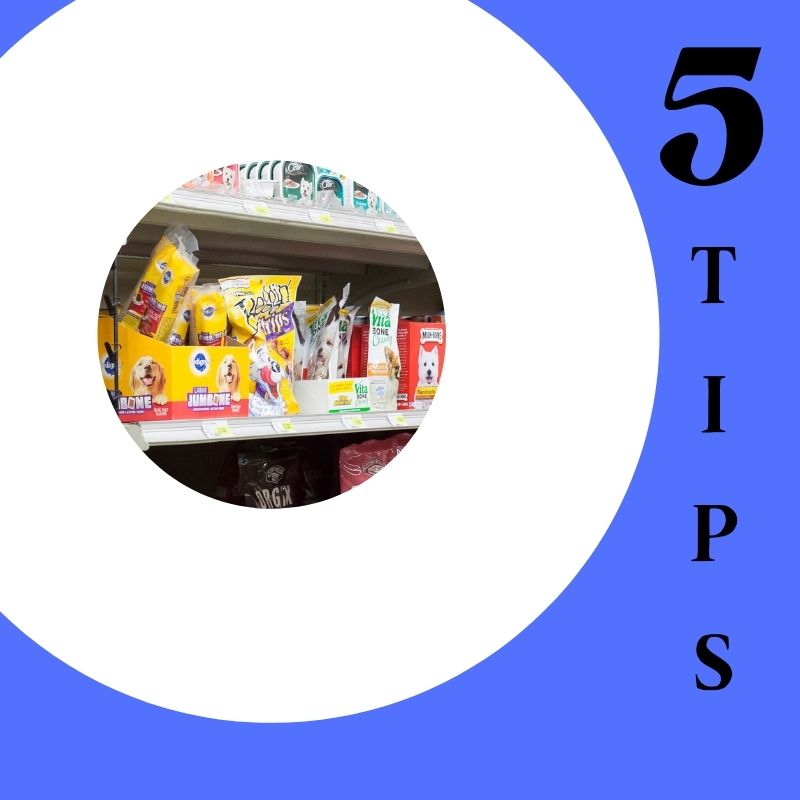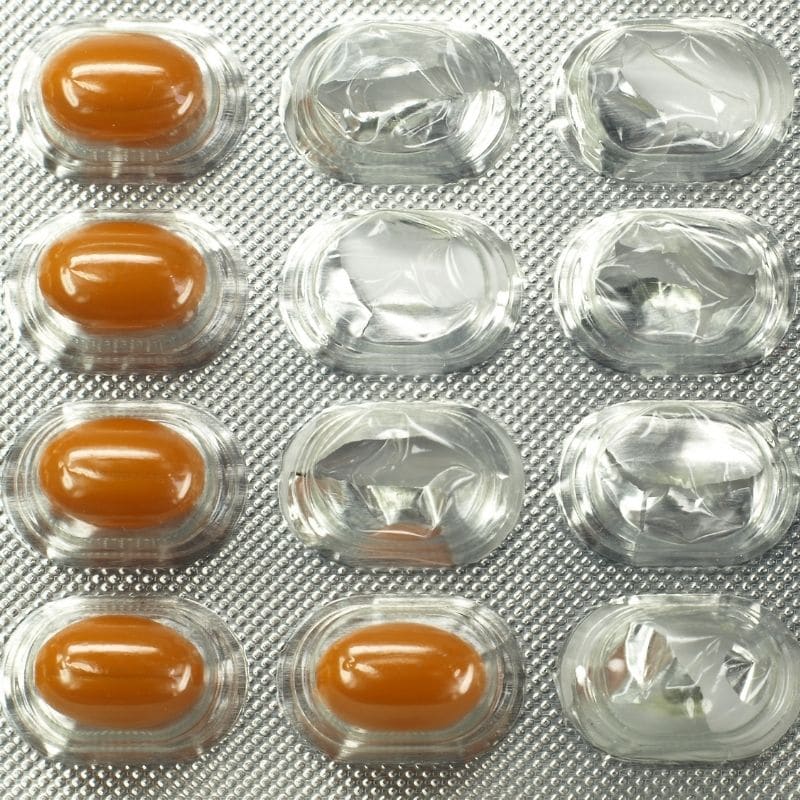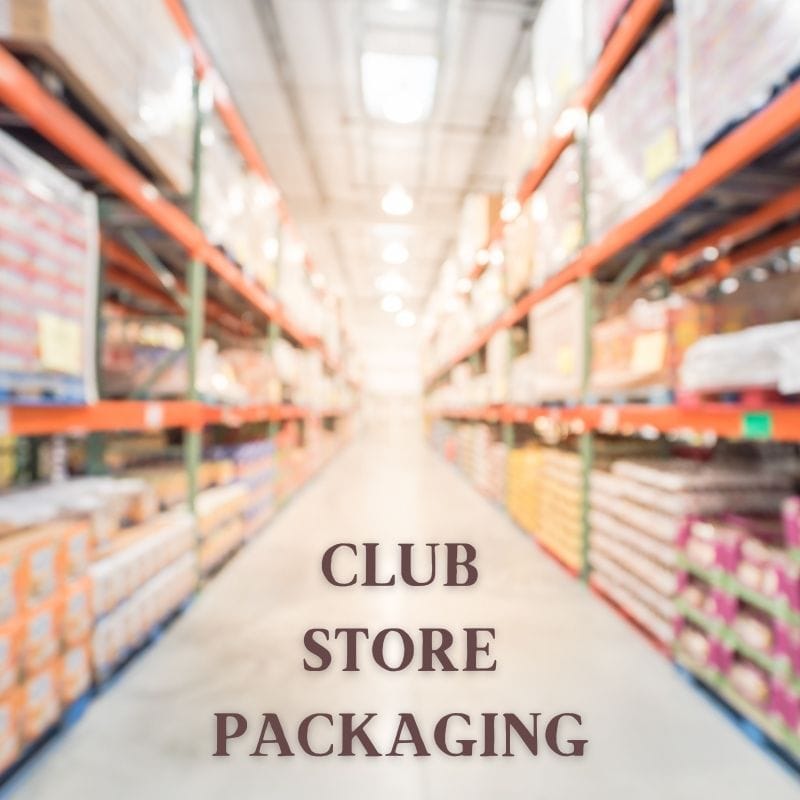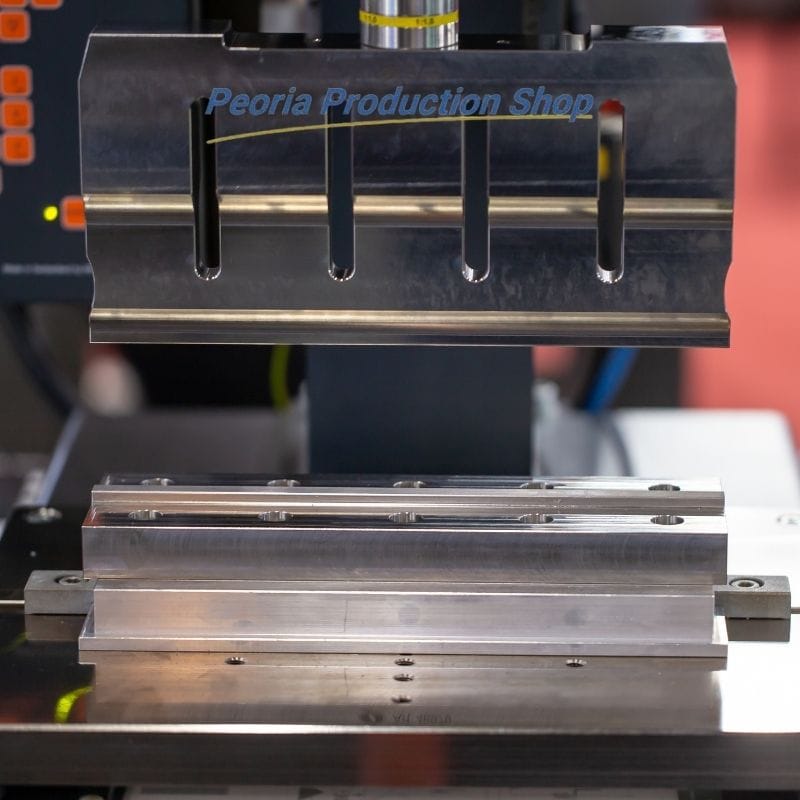Top 5 Tips For A Successful Countertop POP Display
Leave a Comment
To create a successful countertop POP display that catches a shopper’s eye and attention away from the tabloid news, companies need to put some thought into their packaging and marketing approach.
Here are the top five tips for creating a successful, irresistible countertop POP display:
- Choose the right items to display – this should go without saying, but choosing the right items is just as important as your packaging and marketing approach. The items need to represent a good value to the buyer, although you do not need to represent a clearance rack. Countertop impulse buys should be low-cost, $10 or less, yet something that shoppers actually want to buy. This is not the time to market products or brands that do not sell well on the shelves but rather offer popular and common products that people would like to buy anyway, and you are making it more convenient for them.
- Focus on one countertop display at a time – multiple displays can become distracting and move shoppers away from your products of focus. Too many last-minute items to choose from and shoppers are more likely to ignore all of them.
- Keep your display simple – creative, eye-catching colors and messaging is important, but shoppers do not waste much time reading too much at the checkout counter. Recommendations are to keep your text at seven words or less for a countertop display so consumers can look it over in an instant and decide to grab it, or not.
- Choose distinct packaging that stands out – choosing colors and graphics that entice consumers with aesthetically pleasing and distinct messaging makes your products stand out and get noticed.
- Update your displays – be sure to change out your displays with items that appeal to your largest audience and products that are relevant to the demographics. Change out your display every couple of weeks to keep it fresh and grab the attention of your customers. Failing to update your countertop POP displays will get boring pretty quick and you run the risk of losing sales.
Whether you are promoting electronics, food, beverages, candy, cosmetics or convenience items, choosing the right type of packaging and contract packaging company will help make your countertop POP displays a success.
PPS Offers POP Display and Secondary Packaging Solutions
Peoria Production Solutions, PPS, is a leading contract packager offering a wide range of high quality and cost efficient packaging solutions. We have been providing packaging, kitting, assembly, sewing, and other production solutions to companies of all sizes for more than 80 years. PPS supports some of the largest Fortune 100 companies in the U.S. and helps small businesses to improve efficient packaging and delivery of goods.
PPS is a leading contract packaging company offering secondary packaging solutions including flexible packaging, POP displays, blister packs, clamshell packaging and more. As a successful and fully sustainable not-for-profit business, we offer cost efficient solutions that set us apart from other contract packaging companies. Contact us to learn more about improving your secondary and POP display packaging.
Not All Blister Packs Are Created Equal
Leave a Comment A blister pack is a type of packaging with a preformed clear plastic bubble, or blister, that is attached to a type of backing like a paperboard. The bubble can be pre-cut or custom formed to the shape of a product, to show visibility of the product inside while still encasing and protecting the item.
A blister pack is a type of packaging with a preformed clear plastic bubble, or blister, that is attached to a type of backing like a paperboard. The bubble can be pre-cut or custom formed to the shape of a product, to show visibility of the product inside while still encasing and protecting the item.
Think about those glade refill packages we see hanging at the grocery store, or countless other items that are packaged in blister packs.
Where Are Blister Packs Used?
Blister packs are used in a wide range of industries to package just about any type of small to medium-sized product such as:
- Pharmaceuticals
- Pills and lozenges
- Supplements
- Hardware items like screws and nails
- Health and beauty products like razors
- Cosmetics
- Craft supplies
- Toys
- Food items
Blister packs are used to package and showcase these many products and others. Blister packaging is not ideal for all products, and provides the most benefits in the following situations:
- When small products must be contained, protected and organized
- When increased visibility for branding is desired
- When an additional security and theft deterrence is required
- When companies are looking for a sustainable and affordable option
Types of Blister Packs
There are different types of blister packs that provide different benefits depending on a product’s need. Not all blister packs are created equal, the type of product being packaged, the shipping and retail sale needs will dictate the type of blister pack required. The most common types of blister packs are:
- Full face blister pack
- Standing blister pack
- Combo blister packs
- Footed blister packs
- Trapped or fold-over blister pack
Depending on the type of plastic film used to create the blister, some blister packs may provide UV protection to the product inside, humidity control, or tamper-resistant packaging solutions.
Considerations for Blister Pack Design
There are many considerations when choosing your blister pack design such as:
- Product shape
- Type of blister needed
- Type of paperboard
- Ceiling
- Printing
- Branding
- Type of paperboard
Types of Paperboard for Blister Packs
Choosing the paperboard to attach with your blister pack is a big decision as different types of paperboard can affect the appearance and quality of your packaging. Some paperboard, for example, may accept printed ink better than other types of paperboard for branding purposes, while some may be stronger and sturdier than others when security is required. Remembering the most important considerations for blister pack design will help you to choose the right type of materials for your product packaging.
The paperboard backing is an important component of blister packaging and is available in different material types such as:
- Clay coated board (C1S and C2S)
- Chipboard
- Tear resistant board
- Laminated board
- Recycled paperboard
- Solid bleached sulfate (SBS)
Clay coated board, solid bleached sulfate, and recycled paperboard are quite popular blister pack materials. Clay-Coated C1S means that the board is coated on one side which provides a shiny, smooth surface while the other side is a matte finish. C2S simply means that both sides are Clay coated for a shiny, smooth surface on the front and back. Recycled paperboard is popular due to availability in the market and for packagers focused on sustainable, eco-friendly packaging solutions.
PPS Offers Secondary Packaging Solutions
Peoria Production Solutions, PPS, has been providing contract packaging solutions for more than 80 years. We offer a wide range secondary production and packaging services to meet the needs of various companies, distributors, and manufacturers. PPS is experienced with all types of secondary packaging including flexible packaging, POP displays, gift set packaging, auto bag filling and many other services.
PPS is a leading contract packaging company providing various kitting, assembly, and packaging solutions to companies of all sizes. We are an ISO9001:2015 registered company with more than 80 years of experience, a dedicated staff, and a state-of-the-art facility. Contact us to speak with a packaging specialist about the many options available with blister packs, POP displays and quality secondary packaging services.
How To Approach Club Store Packaging
Leave a Comment
This type of high bulk channel, high-volume club store packaging requires a specific approach to be successful and can be fraught with challenges. There are two most important tasks that your club store packaging must accomplish and best practices to help you get there.
The Most Important Tasks of Club Store Packaging
Any company shipping products that will go straight to a retail shelf or in this case, a high-volume bulk floor, must ensure their products arrive safely and are ready to entice the customer. The two most important requirements of club store packaging are:
-
-
- Ensure safe delivery of products
- Be retail ready with consumer friendly display packaging
-
Because most products are typically picked right off the pallet, club store packaging must arrive ready to greet the customer. This is known as Retail-Ready packaging and allows club stores to move your pallets of material directly onto the store floor with minimal handling other than removing the shrink wrap around your pallet. Given that many pallets are laid out in rows, your product needs to stand out the minute your pallet hits the floor.
This is especially important for any product or item, but particularly for food and beverage products, refrigerated and frozen items. These products must be packaged properly with secondary packaging that is resistant to moisture or damage if items are stacked. What your individual product looks like to the consumer as they remove it from the pallet or refrigerator section makes all the difference in whether or not they put that item in their cart.
Tips for Designing Club Store Packaging
Always remember the setting in which your items will be on display. In the case of high-volume bulk stores, most often consumers remove products from the pallet to reveal more products left behind. Here are some of the most important tips when designing your club store packaging.
-
-
- Pay attention to your color theme – your pallets of products must stand out from the others around it, and research shows that creating an aesthetically pleasing color combination with your primary and secondary packaging is most appealing to customers. Creating a strong color cube catches the consumer’s eye and enhances visibility to your products.
- Prioritize images and brand icons – in marketing, a picture is worth a thousand words. Making sure that your customers can see your trusted brand icon clearly and readily, from all angles is important.
- Remember the five sided rule – your pallets will be visible from all four sides and do not forget about the top view. Your products must be appealing from every vantage point and as your products are removed from your display, all sides and each layer will be exposed and visible. Maintain consistency for the most appealing visual impact.
-
Speaking with an experienced wrapping, packaging and palletizing provider can help you to ensure that your products are packaged for successful delivery and display.
PPS Offers Palletizing Solutions
Peoria Production Solutions, PPS, is a leading Midwest provider of contract wrapping, packaging, and palletizing solutions with more than 80 years of experience. We offer a state-of-the-art facility and a dedicated staff committed to high quality in every process. We offer a wide range of secondary production and packaging solutions including assembly, sewing, kitting, packaging and palletizing to meet your specific production requirements.
PPS follows a strict quality policy as part of our ISO9001:2015 registration and is committed to lean processes, continual improvement, and total customer satisfaction. We provide production solutions for companies of all sizes from small to medium size businesses to some of the largest Fortune 100 companies in the country. Contact us to speak with a packaging and palletizing specialist for primary and secondary packaging solutions.
Why Is Dunnage Important?
Leave a Comment
Types of Dunnage
Dunnage provides some sort of padding or security to products being shipped to protect loose, fragile, or valuable items. Most types of dunnage are inexpensive compared to the protection they provide. We are all familiar with the Styrofoam peanuts, bubble wrap and wrapping paper, there are many more types of material that are considered dunnage that provide benefits to the packaging industry.
Bubble Wrap
Bubble wrap has been used for years as one of the most common types of dunnage and continues to be popular among big retailers like Amazon and Walmart. It is usually readily available at shipping companies like FedEx, UPS and the U.S. Post Office. Bubble wrap is lightweight so it does not add much to shipping expenses, yet it protects a variety of items during shipping. Bubble wrap can be reusable which is another plus.
Foam Pieces
Foam pieces are another type of dunnage that is commonly used with electronics like computers, televisions, medical equipment, or sharp edge products. Foam pieces provide a protective cushion that gives a little to protect fragile equipment.
Air Pillows
Air pillows are another common type of dunnage similar to bubble wrap yet these lightweight thin plastic films are inflated with air and used to protect products from sliding around a shipping box. They are convenient to fill up extra space in shipping containers.
Vapor Corrosion Inhibitor, VCI, Bags
A VCI Bag is a type of poly packaging film that is made with added vapor corrosion inhibitor chemistry. The VCI molecules protect against metals causing corrosion by forming an invisible, thin barrier on the surface. This barrier inhibits the corrosion process caused by exposure to water, oxygen, and contaminants.
Kraft Paper
Kraft paper is another common type of dunnage material that is inexpensive, although depending on how it is packaged it could provide less protection than bubble wrap. Crumpling up the paper to create padding helps to prevent it from flattening. These large sheets of paper are eco-friendly, reusable and recyclable.
Corrugated Paper
Corrugated material is also popular and inexpensive, and the cardboard like material provides a stronger construction over paper. Corrugated makes a good dunnage choice when shipping various products of different sizes or weights and if those items could potentially be exposed to moisture.
Wood
Pieces of wood can be used to secure shipments like equipment on pallets for industrial shipping uses. Bracing equipment with a wood barrier can provide added protection during freight shipments.
Plastics
Using a plastic type of dunnage to brace products or equipment can be a more expensive choice so it is often reserved for valuable pieces of machinery and equipment.
Steel
Steel is another expensive type of dunnage and is typically used for heavy products, machinery and equipment.
These are some of the most common types of dunnage, although new technologies are introducing bio-based materials and alternatives to petroleum based dunnage packaging. Using reusable and/or recyclable dunnage material can provide cost-saving efficiencies and contribute to eco-friendly practices.
Why Choosing the Right Type of Dunnage Is So Important
The most important role that dunnage provides is protecting goods during shipping. Dunnage is important for additional reasons as well, the three most valuable benefits that dunnage provides include:
Protection against damage – protecting goods from sliding around inside boxes and protecting sliding inside of freight trucks is a critical role of dunnage. The proper dunnage can be the least expensive part of the packaging and shipping process but provides a valuable role when protecting fragile and valuable items.
Protection against moisture – products that are prone to damage from exposure to moisture such as electronics need dunnage that prevents moisture exposure. VCI bags provide added protection against corrosion with vapor corrosion inhibitor chemistry.
Shock absorption – dunnage protects products in many ways and absorbing shock when getting tossed around, dropped, or stacked with other boxes or pallets is an important role of dunnage.
Peoria Production Solutions has more than 80 years of experience as a contract packaging company. We offer assistance to our customers in evaluating and choosing the best type of dunnage to protect your products. Contact us to learn more about high-quality and cost-efficient wrapping and packaging and why choosing the right type of dunnage is so important.
Heat Seal or Cold Seal Packing: Which to Choose
2 Comments
The flexible packaging industry continues to increase as the need for packaging of products is one of the most vital components in fast-moving market sectors such as food and beverage, consumer goods, pharmaceuticals and more. Packaging preserves and protects products and also provides valuable communication and marketing for companies and their brands. Flexible packaging is also increasing due to consumer demand for sustainable products and with paper, cardboard or plastic packaging, the new mantra is less is more.
As companies meet increasing e-commerce demands, packaging and sealing of their products throughout the product life cycle is critical. Choosing the right type of sealing method to protect your product in a pouch or mylar bag is an important decision. An experienced flexible packaging company can help you determine which sealing method is best for your products and application needs.
Choosing the right sealing method depends on a number of variables such as the specific requirements for a particular item, barrier properties, FDA requirements, sealing strength required, volume and capacity. Knowing the difference between heat sealing and cold sealing can help you decide what is best for your packaging needs.
Heat Sealing for Flexible Packaging
Heat sealing is commonly used in the flex packaging industry and is preferred when maintaining integrity seals is critical. Heat sealing is an economical sealing method that provides high quality packaging sealing solutions. The three most important considerations when heat sealing include:
-
-
- Heat temperature of adhesive and sealing surfaces
- Dwelling time that the machine is in contact with the sealing material
- Pressure applied by the heat sealing equipment
-
Heat sealing is permanently adhered while pressure is applied during the cooling process. Heat sealing can provide a good appearance with high-quality, tamper-evident and cost-effective sealing solutions although may not be ideal for all sealing situations.
Sealing products like chocolate, for example, or other heat sensitive materials may require a cold sealing process, although heat sealing is quite popular for many food and beverage product pouches in many shapes and sizes.
Cold Sealing for Flexible Packaging
Cold sealing, also referred to as self-sealing, is the preferred method for sealing packages which are temperature sensitive such as ice cream or confectionery items as well as certain pharmaceuticals or medical packaging. Self-sealing only requires pressure without the need for heat. Two films are involved, one provides a barrier to the product while the exterior is printed with the product brand information.
When choosing cold sealing options for packaging, companies can choose from a variation in bond strength from low to high, depending on the product requirements. One of the greatest advantages of using a cold, self-sealing process is the time savings over heat sealing, allowing for a much faster cycle time.
One downside to cold sealing is that it usually provides less chemical resistance and may not meet FDA requirements, depending on the product and packaging requirements.
PPS Offers Packaging and Sealing Solutions
Both heat sealing and cold sealing provide specific advantages and one may work better than the other in certain applications. Peoria Production Solutions provides packaging and sealing solutions including flex packaging and heat sealing. We partner with many food and beverage businesses to provide secondary and flexible packaging solutions for many drinks, protein shakes, and other edible products. Our experienced team also provides packaging solutions for certain medical products.
PPS is a leading secondary and flexible packaging contract provider with more than 80 years of experience. We offer a wide range of services, a state-of-the-art large facility with the capacity and resources to meet your production requirements. Contact us to learn how to improve your production process with cost-effective, high quality packaging and sealing solutions.

